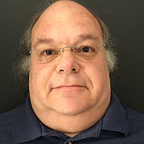CROCK SPOTTER
Surveillance without oversight in Cambridge
Without performing a promised evaluation of its pilot installation, the Cambridge Police Department (CPD) requested and received $50,000 in its FY2018 budget for what it then called an expansion of ShotSpotter, its microphone-based gunshot surveillance system. Installed with much fanfare in 2014, the only mention of this $50,000 request is in an “E-government” capital funds request, with no part of it explained or justified in the Police budget. When ShotSpotter was installed, CPD was careful to explain that no Cambridge money was involved, with financial support coming from a federal Homeland Security grant. The $50,000 request received no notice or scrutiny from the City Council during its hearings on the FY2018 budget. In response to questions posed in preparation for this article, CPD now says that these funds were a “contingency” in case federal grant funds were no longer available to pay for ShotSpotter.
Cambridge’s experience is similar to that of many ShotSpotter installations and follow the company’s early business plans. ShotSpotter lobbied Congress for grant funding for the technology, schooled police departments in how to apply for the grants, and offered to introduce applicants to those who would decide on fund allocations. Cambridge’s installation was part of a larger regional grant, providing ShotSpotter to Chelsea, Everett, Revere, and Somerville, and increasing Boston’s use. By making initial installations “free” to cities, ShotSpotter avoided local procurement processes and examination of the cost/benefits the system. Once installed, ShotSpotter relentlessly publicized each installation, hoping to create a bandwagon effect on other cities. This approach has been rewarding to early investors, as ShotSpotter had a successful initial public offering of its stock earlier this year.
Cambridge is an odd place to find ShotSpotter. In its SEC filings, ShotSpotter describes its solutions as “deployed in urban, high-crime areas to help deter gun violence.” Cambridge is certainly not a high crime area, nor a center of gun violence. According the CPD, Cambridge had had exactly two gunfire incidents in the year before ShotSpotter’s installation. In its 2016 exhaustively detailed 81-page annual crime report, CPD documents three gun fire victims and two other gun violations. Despite an initial promise that ShotSpotter would “allow the police to proactively develop effective problem-oriented, data-driven policing strategies”, there’s no evidence in the annual crime report that ShotSpotter is even a part of Cambridge’s strategic decision making. Gun crime is not analyzed as its own category and ShotSpotter information is not even included.
Yet, in its five year strategic plan, the CPD includes ShotSpotter as one of its initiatives in its objective to “prevent and reduce crime through early identification and intervention.” The plan states as a metric of success “# of shots spotted” which, if taken at face value, means that an increase of gun fire would mark a success.
Over ShotSpotter’s 20 year history, there has been no independent analysis of its effectiveness. ShotSpotter relies on anecdotes and the bandwagon effect to fuel sales, as well as the seeming commonsense notion that a set of microphones and algorithms would speed police to a crime scene. In practice, a Forbes review of data from seven cities shows that 30%-70% of ShotSpotter activations find no evidence of shots being fired. CPD declined to make ShotSpotter activation data available for this article, citing active investigations. Forbes notes that ShotSpotter considers this information proprietary, and urges cities to deny all public records requests.
Rather than performing its own evaluation, perhaps using its highly regarded Analysis Unit, Cambridge Police met with the Department of Homeland Security’s Urban Areas Security Initiative, the granting agency, and ShotSpotter to discuss the strengths and weaknesses of the ShotSpotter.
In response to questions, CPD was unable to provide any example of ShotSpotter aiding the resolution of any case, noting only that it provides better forensic information with respect to the time and location of gunshots.
The City Council’s Public Safety Committee will be holding a hearing on October 18th at 6:30 PM to discuss a proposed surveillance technology oversight ordinance which, in its draft form, would require Council approval of any surveillance technology as well as analyses of its impact and effectiveness.
Saul Tannenbaum is a Cambridge based activist and blogger, writing on the intersections of technology, politics and social justice.
